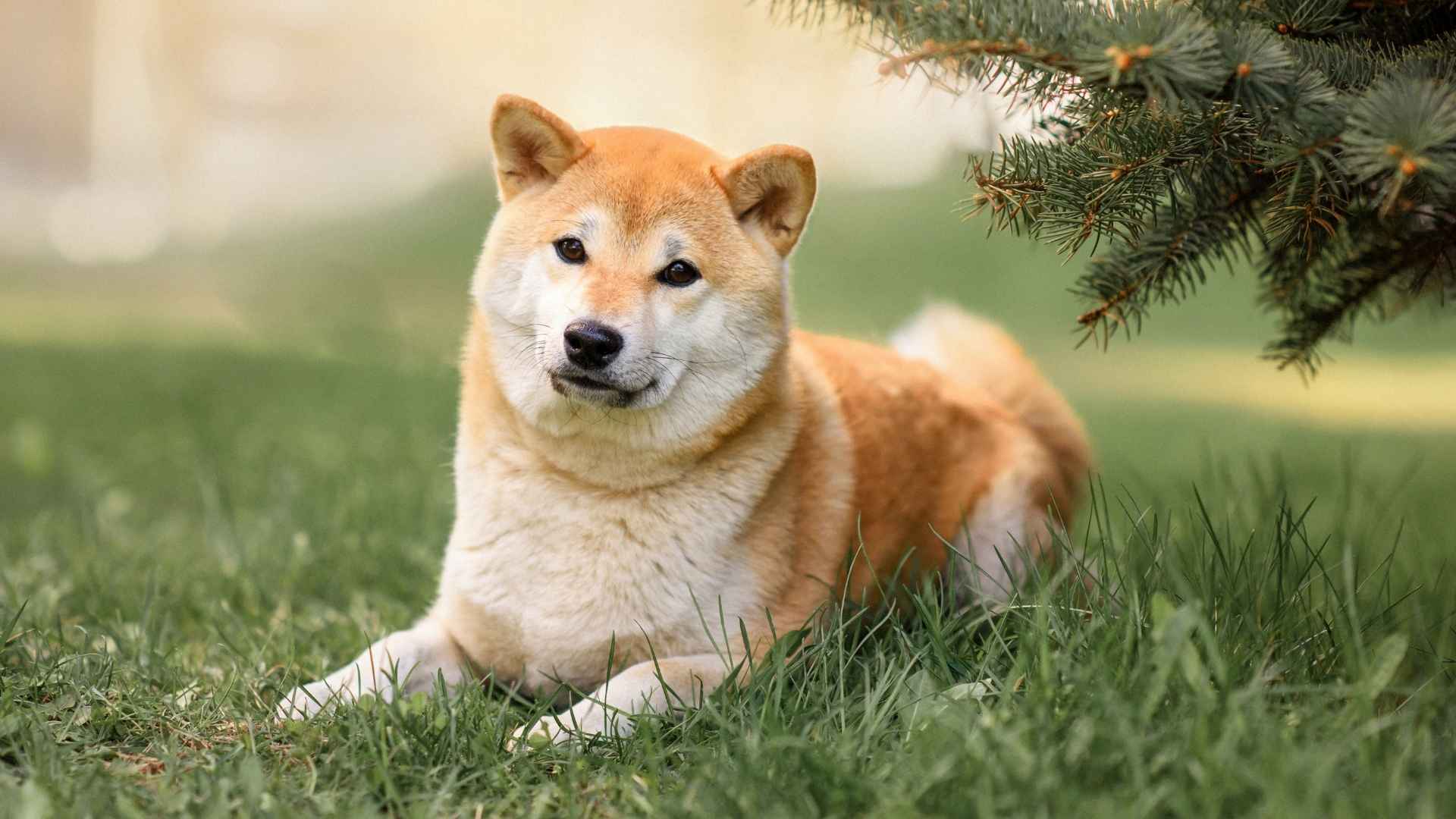Ear health is an important part of canine care, but some breeds are naturally better equipped to keep their ears clean. Shape, size, and airflow all play a role, and breeds with upright ears or well‑ventilated ear canals often experience fewer issues with wax buildup, debris, or infection.
These dogs are less prone to moisture getting trapped in the ear, which reduces the conditions that bacteria and yeast thrive in. While all dogs benefit from regular checkups and grooming routines, certain breeds require far less intervention in this area, making them easier to maintain.
Owners of these breeds often find that routine ear checks involve little more than a quick wipe, even after outdoor adventures.
This article explores seven dog breeds with naturally clean ears, describing their physical traits, care needs, and why their ear structure contributes to their overall health and comfort.
Dog Breeds With Naturally Clean Ears
1. Bull Terrier
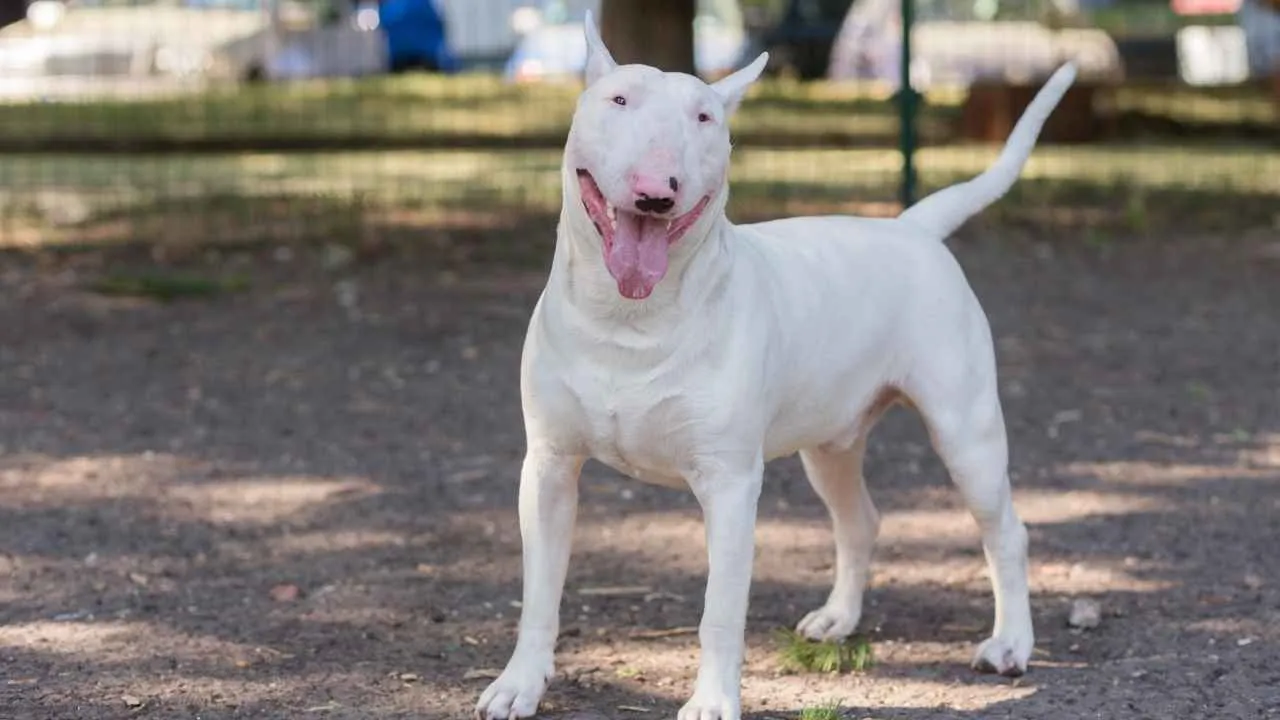
Bull Terriers have distinctive, upright, triangular ears that allow air to circulate freely. This natural ventilation means their ears stay drier and cleaner than many breeds, reducing the chance of debris collecting. The design of their ear canals supports an environment that’s less prone to infection.
Training a Bull Terrier works best when it’s steady and creative. They are intelligent but can get stubborn, so short, interesting sessions hold their focus. Early obedience lessons and impulse‑control games help direct their playful energy.
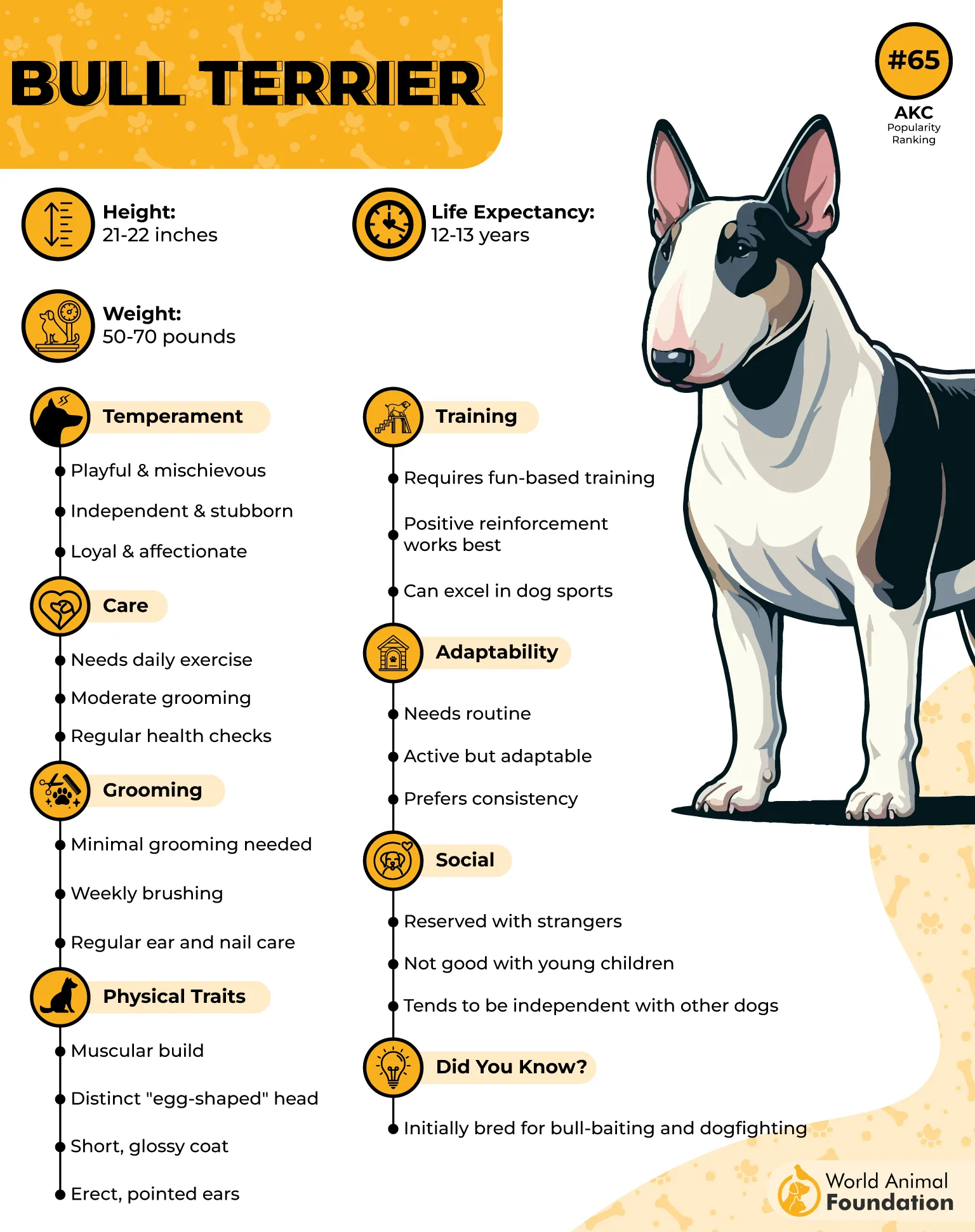
Daily exercise is essential. Brisk walks, interactive games, and off‑leash running in safe spaces give them a way to release energy. Staying active also helps their overall skin and ear health.
Their coat is short and low‑maintenance, but routine ear checks are still important. A quick weekly wipe keeps even naturally clean ears free of dust or wax.
Bull Terriers are generally healthy but can face skin sensitivities and joint issues as they age. Their ears, however, tend to remain low‑maintenance throughout their life.
Fun Fact
Bull Terrier puppies start life with their ear tips folded, and the upright shape they’re known for doesn’t appear until they’re a few months old.
2. Shiba Inu
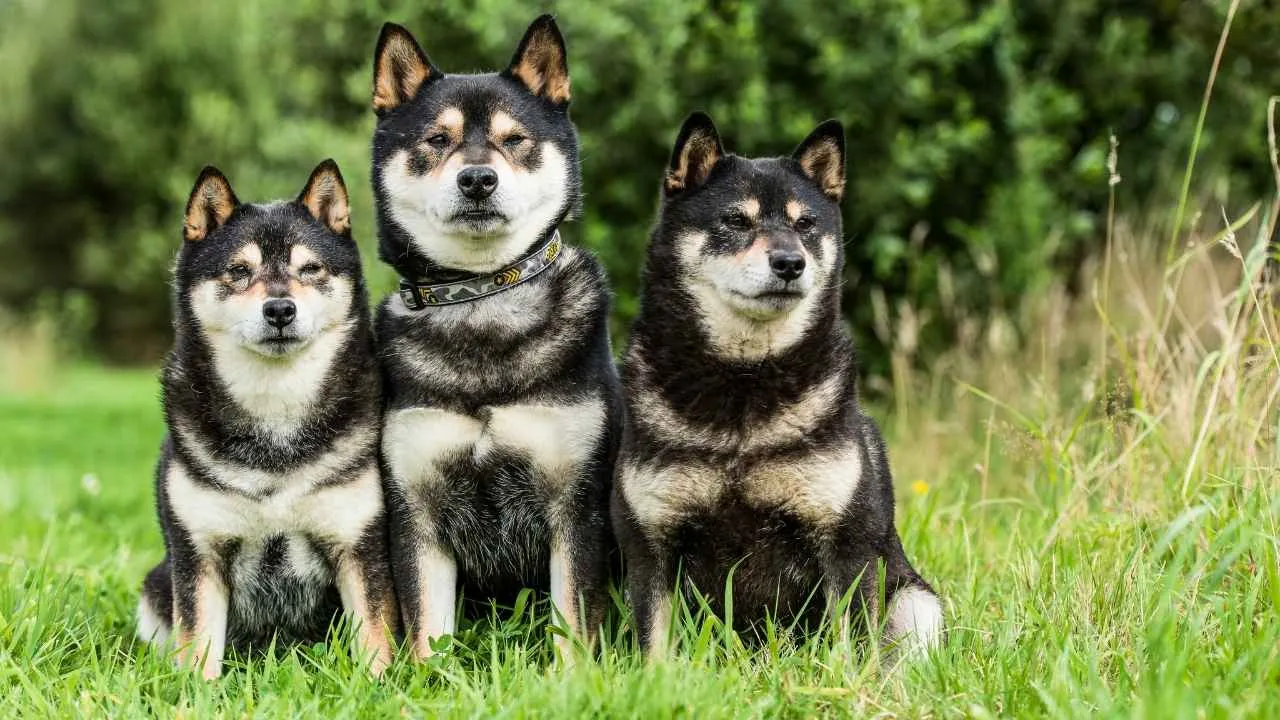
Shiba Inus have small, sharply pointed ears that almost always stay upright. This shape encourages airflow, making it hard for moisture to stay trapped inside the ear canal. As a result, Shibas often need minimal ear care compared to breeds with heavier ear flaps.
They are famously independent thinkers. Training works best in short, consistent sessions that keep their interest, because long drills bore them quickly. Positive reinforcement paired with structure helps them stay engaged.
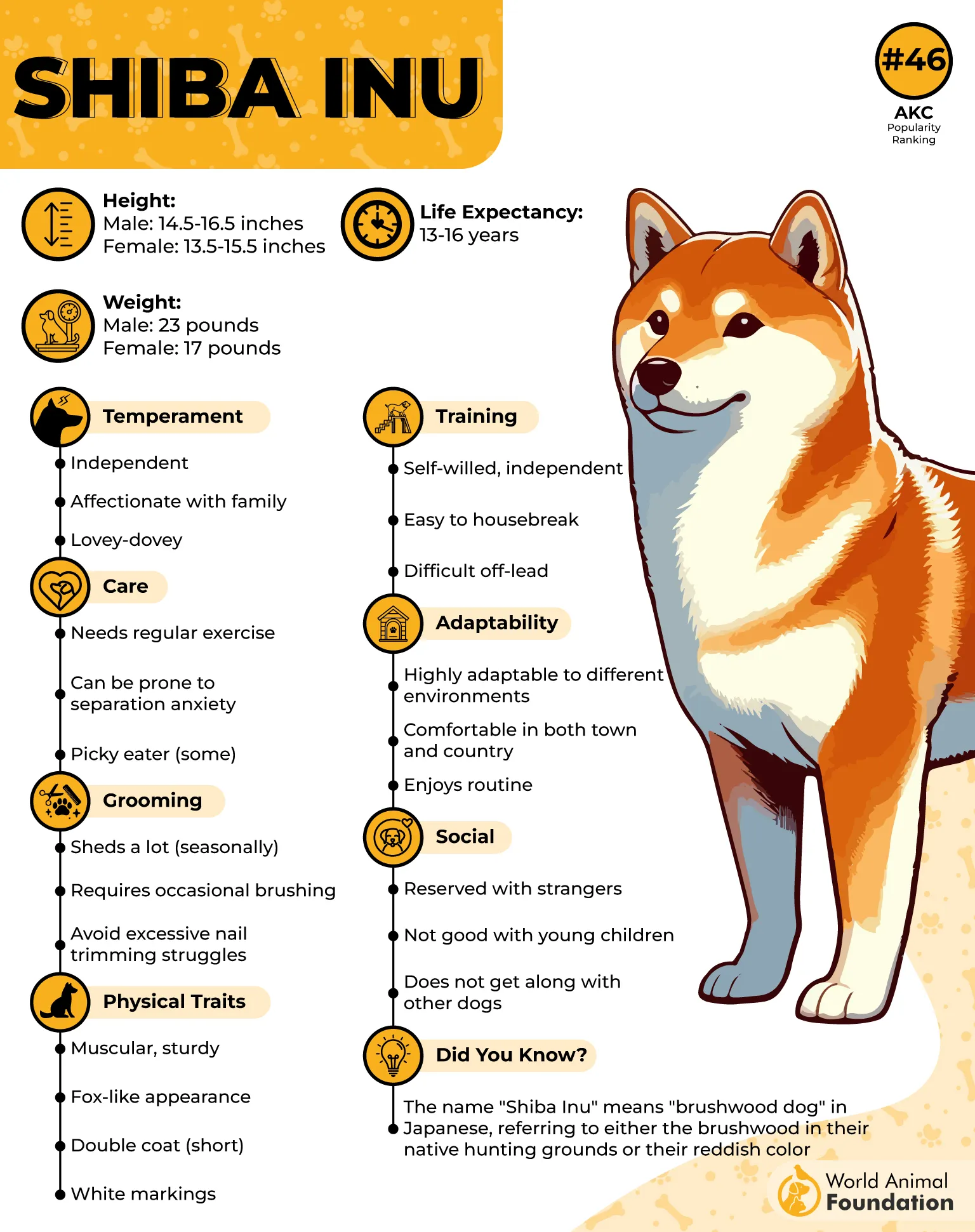
Shibas do well with moderate daily exercise. Brisk walks, play sessions, and simple puzzles like scent games keep their minds and bodies active. Movement also reduces humidity around the ear area, supporting that natural cleanliness.
Their dense coat sheds heavily twice a year and benefits from extra brushing during those times. While ears stay relatively clean, checking for debris after outdoor adventures is wise.
Shibas are generally healthy but may face hip dysplasia or allergies. Their ears rarely need more than routine attention, making them one of the easiest breeds for ear maintenance.
Fun Fact
The Shiba Inu is one of Japan’s oldest dog breeds, and its name translates to “brushwood dog,” referencing the terrain it once hunted in.
3. Chihuahua
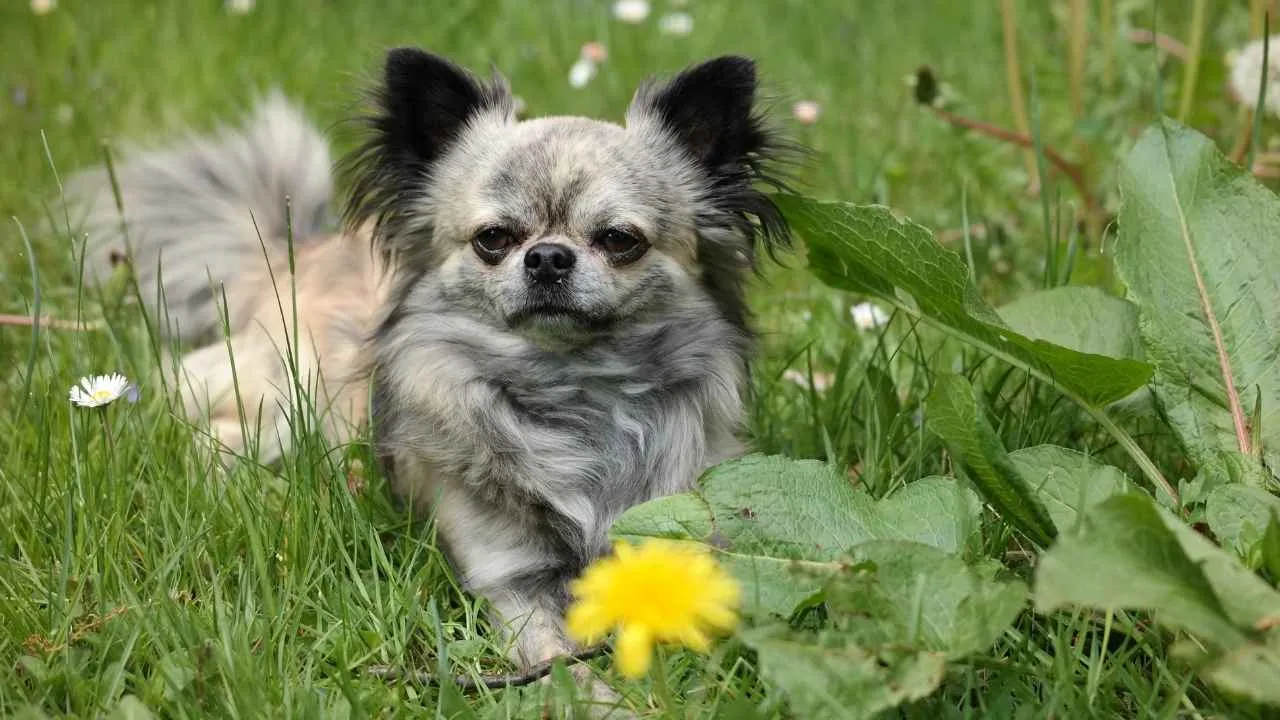
Chihuahuas have large, upright ears that act like tiny funnels for fresh air. Their ear shape prevents the kind of warm, enclosed environment where bacteria thrive, which keeps their ears naturally cleaner. Even long‑coated Chihuahuas benefit from this ear design.
Training is essential even for a toy breed. Short, patient sessions with gentle guidance curb their tendency to bark and overreact. Early socialization helps them stay calm and manageable.
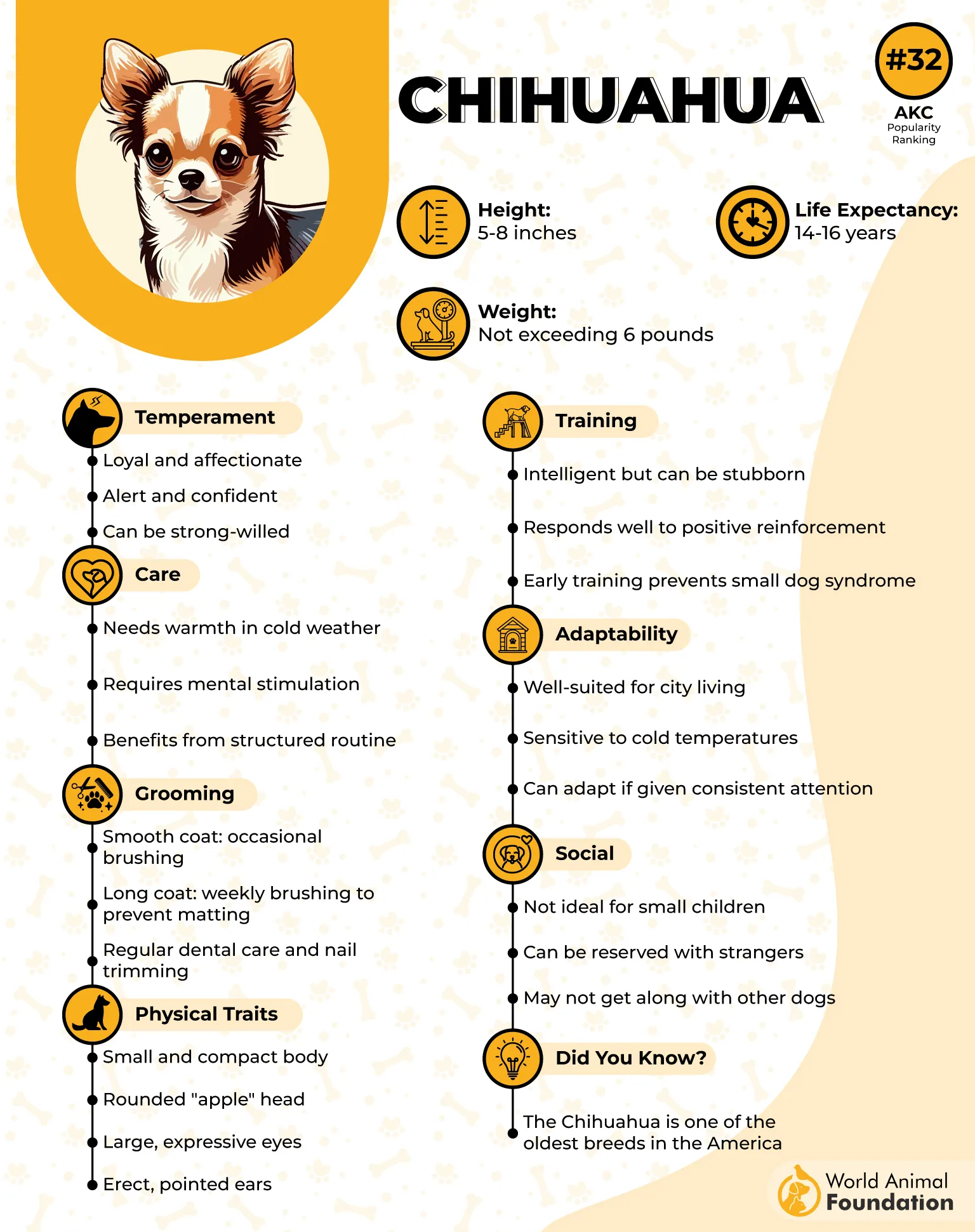
They don’t need long walks, but they thrive on frequent short bursts of movement. Indoor play, quick strolls, and games like fetch keep them fit without overstraining their tiny frame.
Ear upkeep is minimal—usually a quick check and wipe once a week. Their upright ear position makes it easy to spot any early signs of redness or buildup.
Chihuahuas are long‑lived, often reaching 14 to 17 years. Their small size and ear structure make ear infections uncommon, though regular monitoring is still part of good care.
Fun Fact
Chihuahuas were revered by the ancient Toltec and Aztec civilizations, and their likeness appears in pre‑Columbian art and pottery.
4. Boston Terrier

Boston Terriers have small, upright ears that stay open to the air and rarely trap moisture. The shape, along with their generally low-oil coat, helps prevent buildup and reduces the need for constant ear cleaning. Owners often find their ears stay clean with little more than a quick check.
Training a Boston Terrier is straightforward when sessions are upbeat and consistent. Purina states that they respond well to praise and short commands, and they enjoy learning tricks that match their lively personality. Positive routines help prevent stubborn streaks from surfacing.
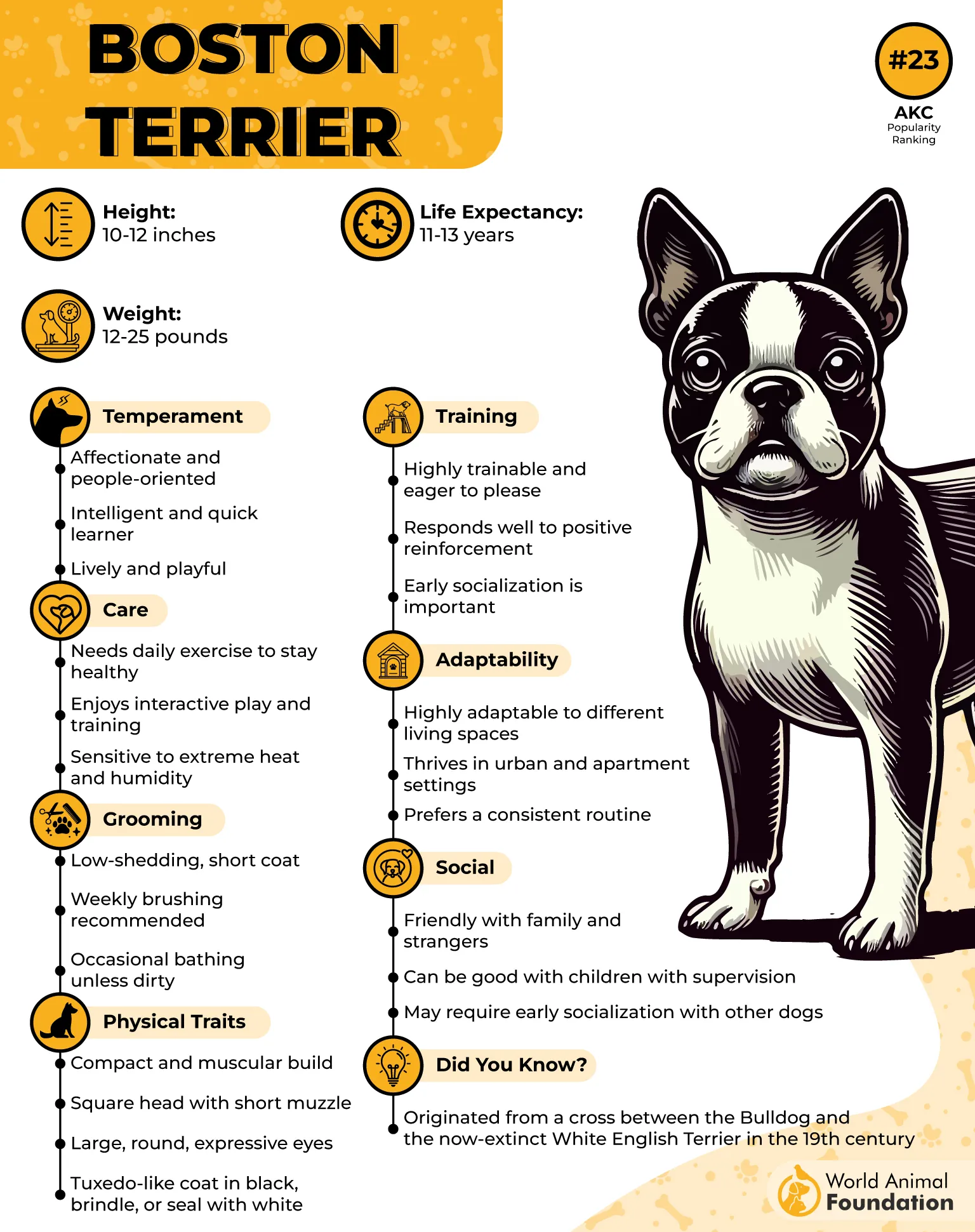
Their exercise needs are modest but important. A few brisk walks, indoor games, and bursts of play in the yard are enough to keep them content. Too much strenuous work in hot weather can be hard on them, but steady daily movement keeps them healthy.
Boston Terriers have minimal grooming requirements beyond occasional brushing and nail trims. Their naturally clean ears still benefit from a weekly look, especially after outdoor play, to remove dust or pollen.
They are generally healthy but can face breathing issues due to their short snout. Despite that, their ears remain one of the easiest features to care for, making them low-maintenance in this respect.
Fun Fact
Boston Terriers are nicknamed “the American Gentleman” because of their tuxedo-like coat markings and polite, people-friendly nature.
5. Australian Cattle Dog
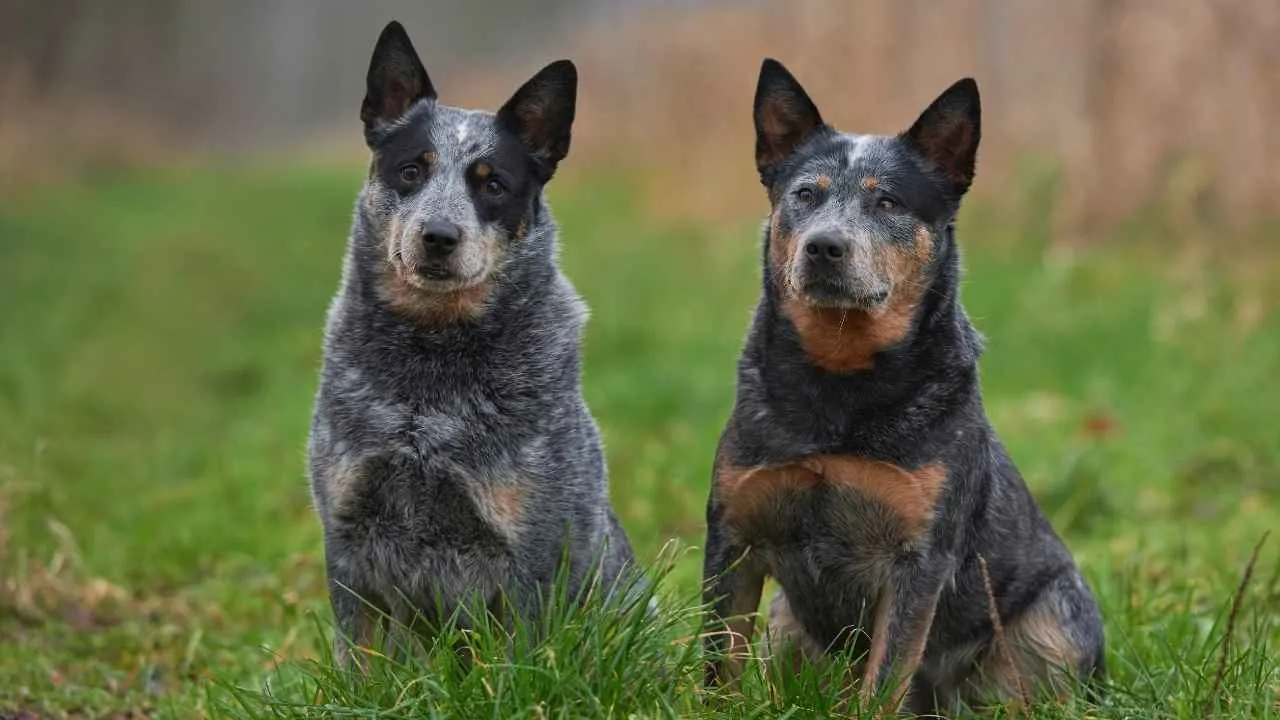
Australian Cattle Dogs have upright, pointed ears that stay open and dry, even in rugged environments. That structure means dirt and moisture rarely linger, giving them an advantage when it comes to ear cleanliness.
These dogs are built to work, and their training reflects that. They thrive on obedience, herding drills, and agility exercises, responding best to calm, clear commands. Their natural focus makes them quick learners, but also means they notice inconsistencies in training.
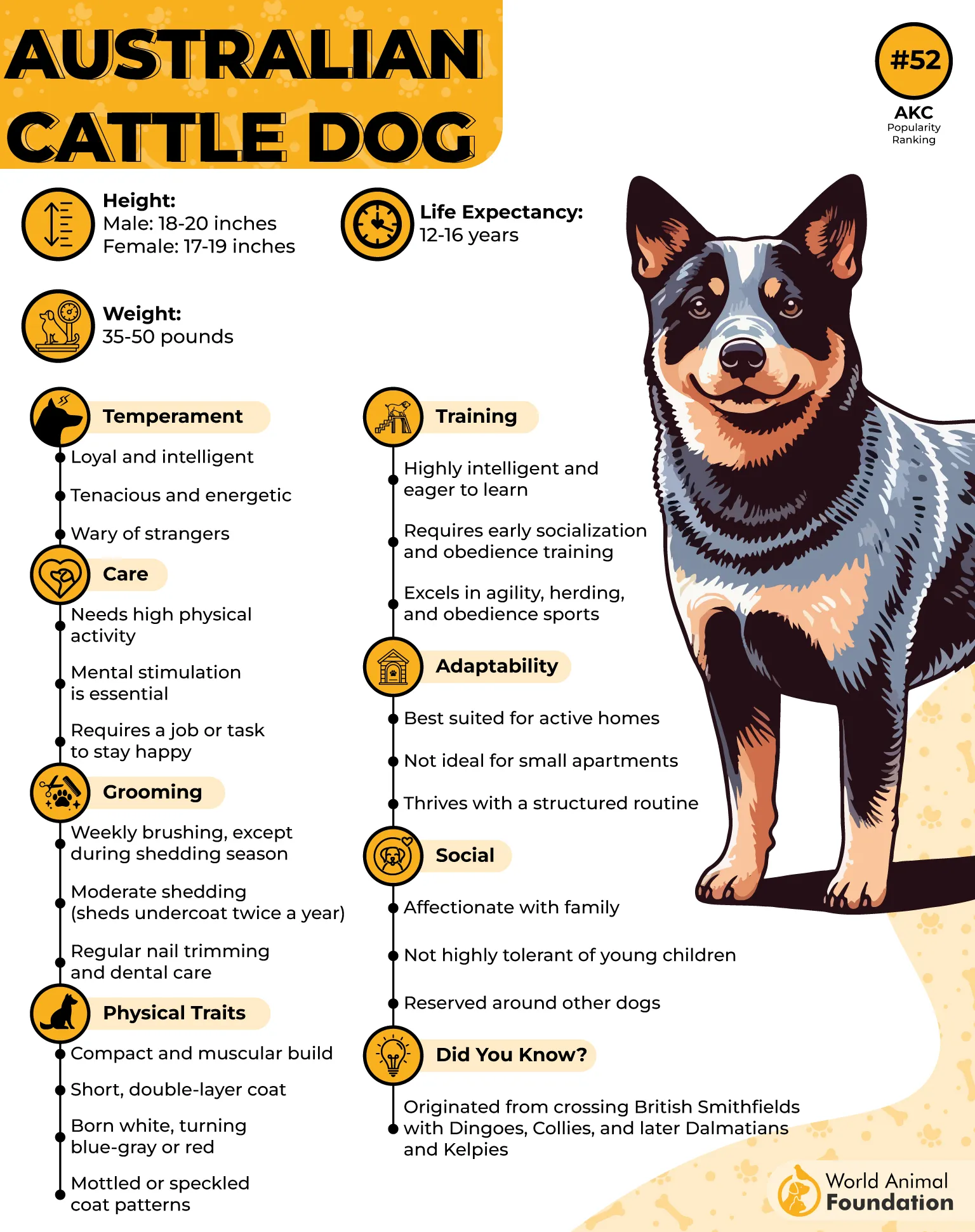
Their exercise needs are high. Runs, hikes, and structured games like fetch or herding exercises burn the energy they were bred to have. Without enough stimulation, they can channel that drive into unwanted behaviors.
Their coat is short and weather-resistant, requiring little more than occasional brushing. A weekly ear check is usually enough, and most of the time, there’s little to clean.
Health considerations include joint issues and deafness in some lines. Their ears, however, are remarkably trouble-free—another reason they’re popular with owners who value practicality in a dog.
Fun Fact
Australian Cattle Dogs are famous for their longevity, with some individuals living past 15 and in one case, reportedly over 29 years.
6. German Shepherd
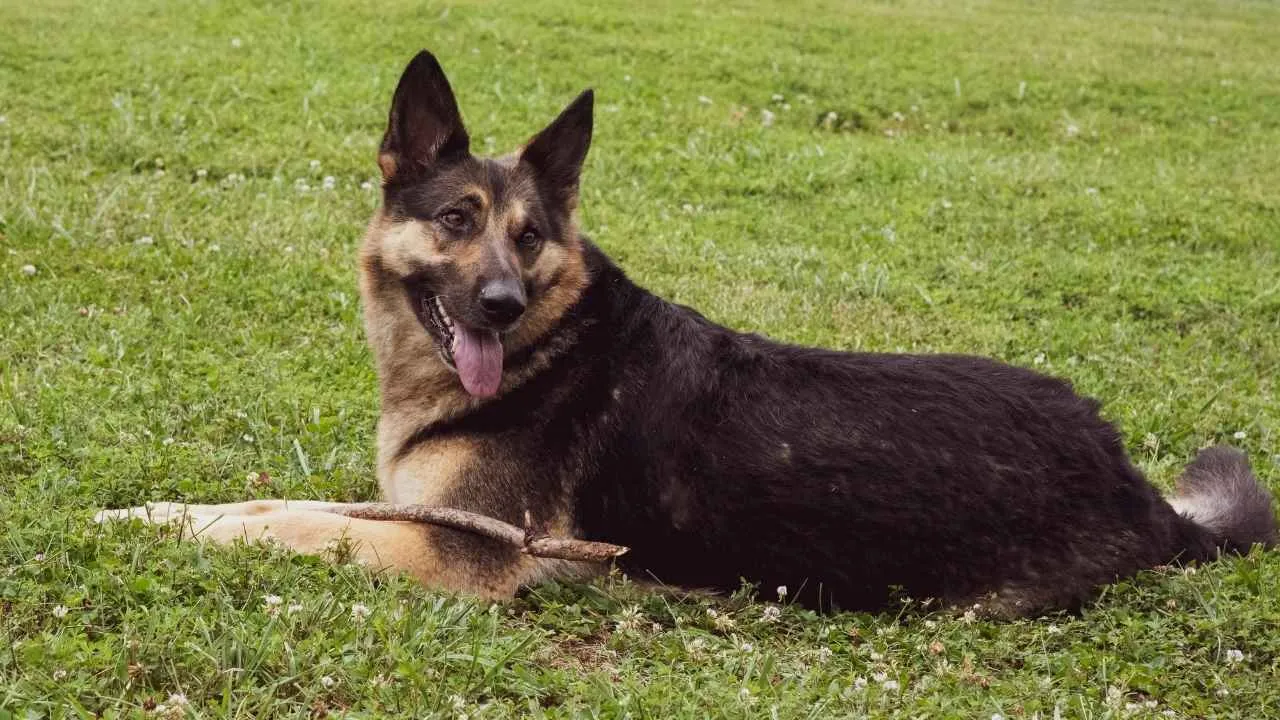
German Shepherds’ tall, pointed ears stand high from puppyhood into adulthood, offering constant airflow. That natural ventilation helps keep wax and debris from collecting, which means their ears typically stay cleaner than many other large breeds.
PetMD states that they are among the most trainable dogs in the world. Structured obedience sessions, scent tracking, and advanced work like agility or service training all keep their minds active. Consistency matters—they thrive when they know what’s expected.

Exercise is non-negotiable for this breed. They do best with long daily walks, runs, and mentally challenging tasks. Physical activity supports overall health and ensures their natural alertness doesn’t turn into restlessness.
Their medium-length double coat sheds heavily, but their ears need only light upkeep. A quick inspection after outdoor work usually catches any dust or pollen, and full cleanings are rarely needed.
Hip and elbow dysplasia are known health concerns, but ear infections are not common for this breed. Their ear design is part of what makes them low-maintenance in that area.
Fun Fact
The first registered German Shepherd, Horand von Grafrath, became the foundation dog for nearly every German Shepherd bloodline today.
7. Belgian Malinois
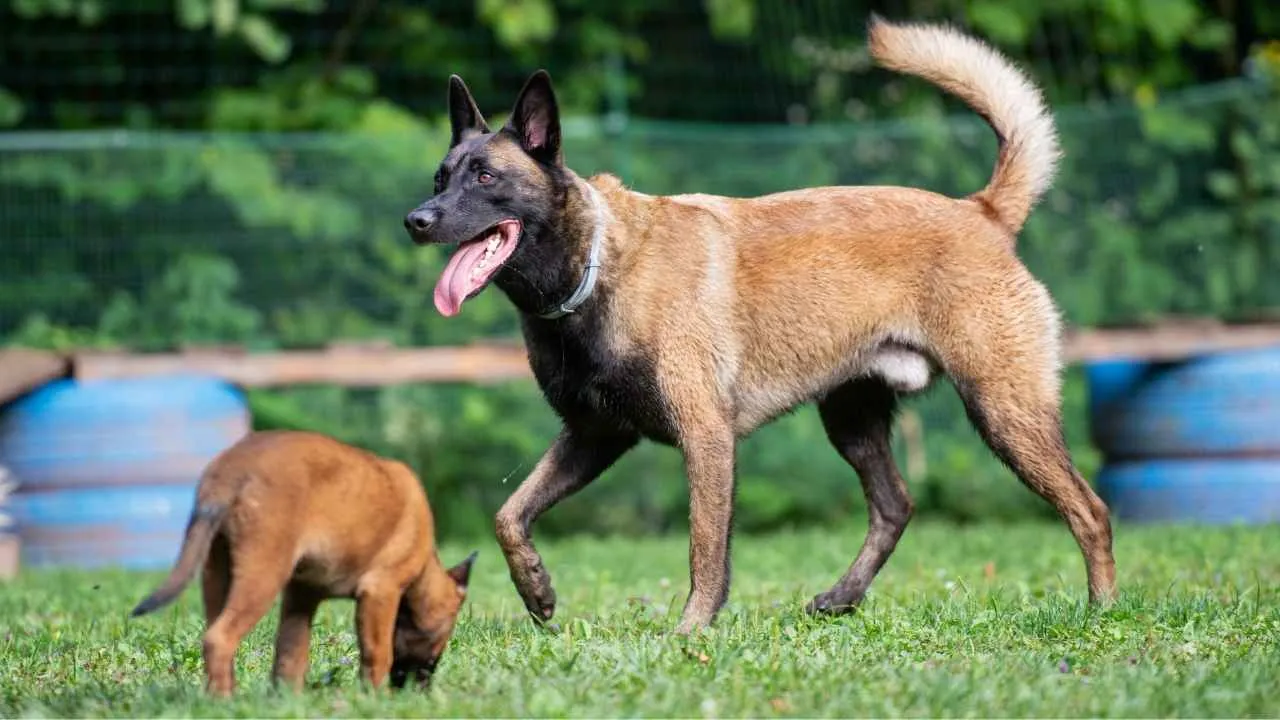
Belgian Malinois have sharply upright ears that give them a naturally clean structure. The open shape means air circulates easily, drying the ear canal and helping to prevent infection or buildup.
Their reputation as elite working dogs is well-earned. According to the AKC, they respond to structured training better than almost any breed, excelling in obedience, detection, and protection work. Because of their intelligence, they require varied drills to avoid boredom.
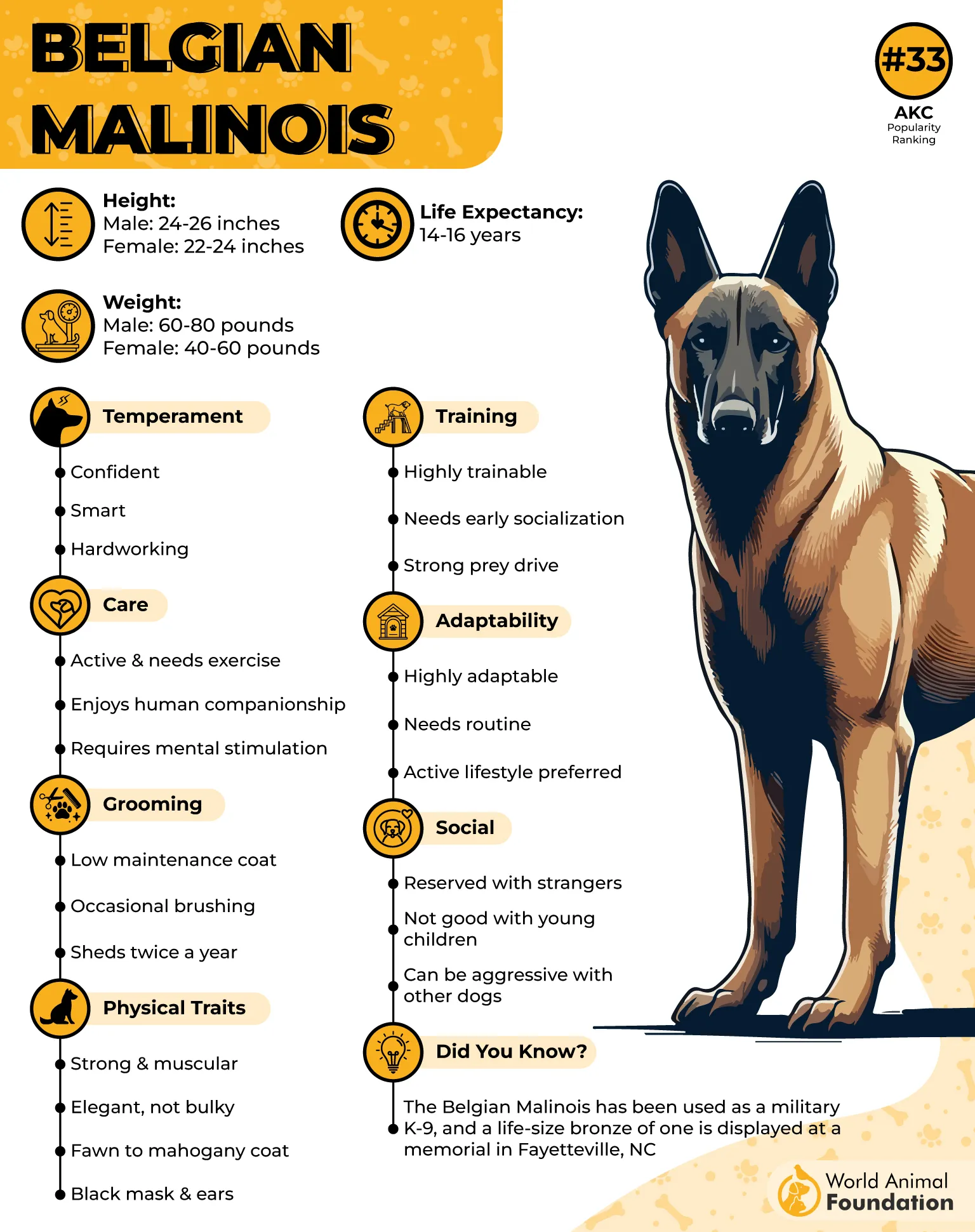
High-energy exercise isn’t just recommended—it’s essential. Malinois thrive on long runs, agility courses, and any task that engages both mind and body. Without enough stimulation, they may channel that energy into destructive habits.
Their short, dense coat is easy to maintain. Weekly brushing and quick ear checks keep them in top condition, and their ear design means heavy cleanings are rarely needed.
Health issues like hip dysplasia and certain eye conditions can appear, but ear infections are uncommon. Their natural ear shape keeps them in better condition than breeds with heavier ear flaps.
Fun Fact
Belgian Malinois are used by military and police units around the world, including the team that assisted in the 2011 mission to find Osama bin Laden.
Conclusion
A dog’s ears are one of the most important areas to monitor for overall health. Breeds with pointed tips often have fewer ear issues than those with floppy ears, but every dog benefits from routine care. Dog owners should regularly check the outer ear for waxy buildup, debris, or irritation and clean their dog’s ears when needed to avoid recurrent ear infections.
When care is required, use a natural dog ear cleaner or a vet‑approved ear cleaning solution rather than harsh chemicals like hydrogen peroxide. A cotton ball or pad can be used to gently wipe the outer ear and remove debris, while over-cleaning or inserting cotton swabs into the dog’s ear canal can cause significant discomfort or even damage the eardrum.
Dogs that swim frequently or have sensitive ears may need more attention, since moisture in the ear canal can lead to inflammation or an infected ear. Massaging gently at the base of the ear after applying a small amount of solution helps loosen dirt, and allowing the dog to shake helps expel it.
For dogs prone to persistent wax, ear mites, or dirty buildup, consult a veterinarian for proper treatment. Regular cleaning, handled carefully and with positive experiences, keeps ears healthy and avoids pain for both pet and owner.


